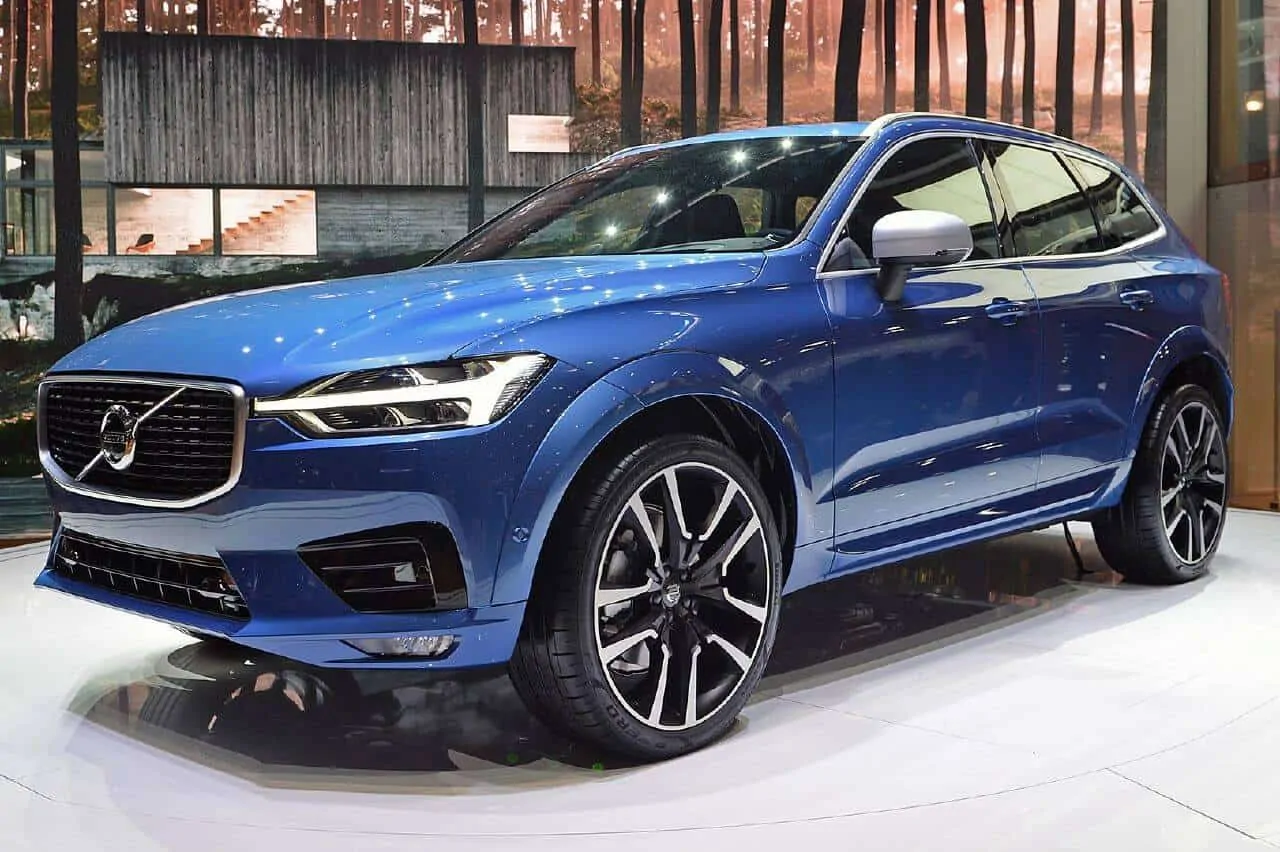Volvo has been the darling of the car design world as of late, and it isn’t hard to see why. From the XC90 to the S90 and V90 and now the XC60 unveiled in Geneva, Volvo’s design team has progressively developed a very cohesive (and instantly recognizable) design identity that follows on from the fabulous trilogy of concept vehicles that have made their debut since Thomas Ingenlath took over as head of design just over five years ago.
The exterior of the Volvo XC60 is a world away from the model it replaces, as well it should be — the current generation XC60 first made its debut in 2008. And while it has been a sales leader for the Swedish brand globally, Volvo design has since moved the game on. Much along the lines of how the XC90 was transformed from stodgy, upright SUV to voluptuous premium Scandinavian vehicle — nipping at the heels of its German rivals in the segment — the XC60 is a significant step change over the outgoing car.
Volvo’s design approach is to make cars within the family have their own character, which the XC60’s undoubtedly achieved. While it would have been easy to cut and paste the XC90’s design elements onto a smaller model and call it a day, there’s no Russian doll effect here. The XC60 isn’t just a downsized XC90 but — like the middle child — a member of the family that has its own rambunctious and expressive identity.
At the front is a wide grille linked to all-new headlamps incorporating Thor’s hammer — Volvo’s signature look across the range pioneered by the XC90. The decision to attach these to the grille is a clever design trick (Max Missoni refers to it simply as “good design”), which serves to visually emphasize the vehicle’s width and make it more balanced and assertive. It also gives the DRG a sportier demeanor than its older sibling.
The fine work of Missoni and his team is especially obvious when viewing the XC60 from the front and rear 3/4 angle. The surfacing of the bodyside is at once sensual and technical, with a few precisely placed lines that carve out a very contemporary aesthetic. A soft shoulder runs the length of the vehicle before meeting a technical crease that defines the rear haunch, while the lower section of the doors mirrors the lower lightcatcher area, taking weight out of the profile while making the design look more athletic.
The rear end, meanwhile, moves Volvo’s SUV design themes forward. The long upright taillamps still flank the backlight, but they now feature a thin light strip within that gives them a more contemporary feel. At their base, a slender horizontal section runs towards the rear number plate to emphasize the car’s width (similar to the treatment on the V90 wagon), which is further accentuated by the rear haunch. The result is a car with a far sportier stance than its predecessor.
The interior is another triumph from the Volvo design team, led by former Bentley interior design director Robin Page. With a flowing sculptural IP beautifully integrating Volvo’s intuitive HMI screen at the center, the XC60 is a very welcoming cabin space. The attention paid to detail is simply tremendous, while the materials employed — such as the reclaimed wood that adorns only the instrument panel rather than being spread throughout the entire cabin — redefine authentic luxury.
“We’ll spend the money and only put it in where it matters,” Ingenlath said when I asked him about it at the show. “In front of the passengers is the most important area [in the cabin].”
The interior also has a distinct ‘sport’ feel about it, even when fitted with the top-of-the-line T8 plug-in hybrid powertrain that substitutes a conventional leather and plastic-clad gear lever for one made of Orrefors crystal. Then there are the optional ‘contour’ seats, which hug the occupants in a way previously unseen in Volvo design (though not the Polestar variants) and bring in another element of sportiness into the cabin.
The juxtaposition of light and dark colors, high-quality materials and delicate infusion of metal and chromed accents also lend the cabin a true luxury feel that would have been out of sync with the Volvo brand in the past, but which now bring the company’s interiors firmly to the fore and in direct competition with German automakers in the premium segment.
It’s easy to see why Volvo’s XC60 was universally acclaimed by all of the designers we spoke with and emerged as was one of the production car stars of the 2017 Geneva motor show. It is yet another indication in a line of products that pushes Volvo’s design direction and overall design quality forward into the next era.















